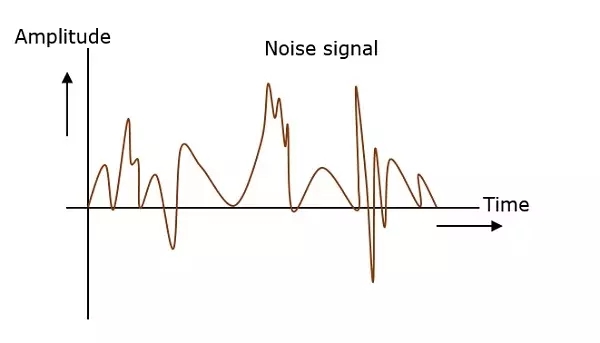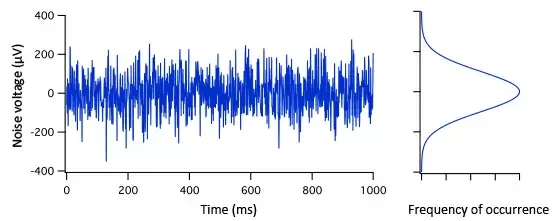
 Data Structure
Data Structure Networking
Networking RDBMS
RDBMS Operating System
Operating System Java
Java MS Excel
MS Excel iOS
iOS HTML
HTML CSS
CSS Android
Android Python
Python C Programming
C Programming C++
C++ C#
C# MongoDB
MongoDB MySQL
MySQL Javascript
Javascript PHP
PHPPhysics
Chemistry
Biology
Mathematics
English
Economics
Psychology
Social Studies
Fashion Studies
Legal Studies
- Selected Reading
- UPSC IAS Exams Notes
- Developer's Best Practices
- Questions and Answers
- Effective Resume Writing
- HR Interview Questions
- Computer Glossary
- Who is Who
What is electronic noise and what are its types?
Noise is an unwanted signal which interferes with the original message signal and corrupts the parameters of the message signal. This alteration in the communication process makes the message to get altered after reaching. It is most likely to be entered at the channel or the receiver.
The noise signal can be understood by having a look at the example figure below.

Hence, it is understood that noise is some signal which has no pattern and no constant frequency or amplitude. It is quite random and unpredictable. Measures are usually taken to reduce it, though it can’t be completely eliminated.
Most common examples of noise are
- “Hiss” sound in radio receivers
- “Buzz” sound amidst telephonic conversations
- “Flicker” in television receivers etc.
Types of Noise
The classification of noise is done depending upon the type of source, the effect it shows or the relation it has with the receiver etc.
There are two main ways of which noise gets produced. One is through some external source while the other is created by the internal source, within the receiver section.

External Source
This noise is produced by the external sources which may occur in the medium or channel of communication, usually. This noise can’t be completely eliminated. The best way is to avoid the noise from affecting the signal.
Examples
Most common examples of this type of noise are:
- Atmospheric Noise (due to irregularities in the atmosphere).
- Extra-terrestrial noise such as solar noise and cosmic noise.
- Industrial noise.
Internal Source
This noise is produced by the receiver components while functioning. The components in the circuits, due to continuous functioning, may produce a few types of noise. This noise is quantifiable. A proper receiver design may lower the effect of this internal noise.
Examples
Most common examples of this type of noise are:
Thermal agitation noise (Johnson noise or Electrical noise)
Shot noise (due to the random movement of electrons and holes)
Transit-time noise (during the transition)
Miscellaneous noise is another type of noise which includes flicker, resistance effect, and mixer generated noise, etc.

